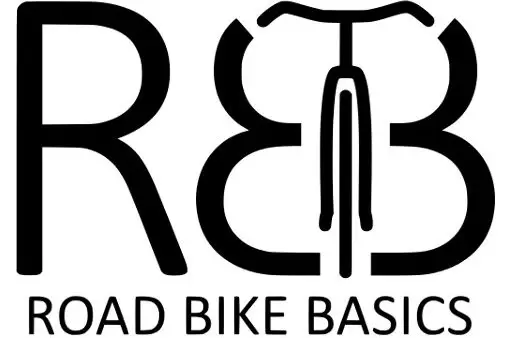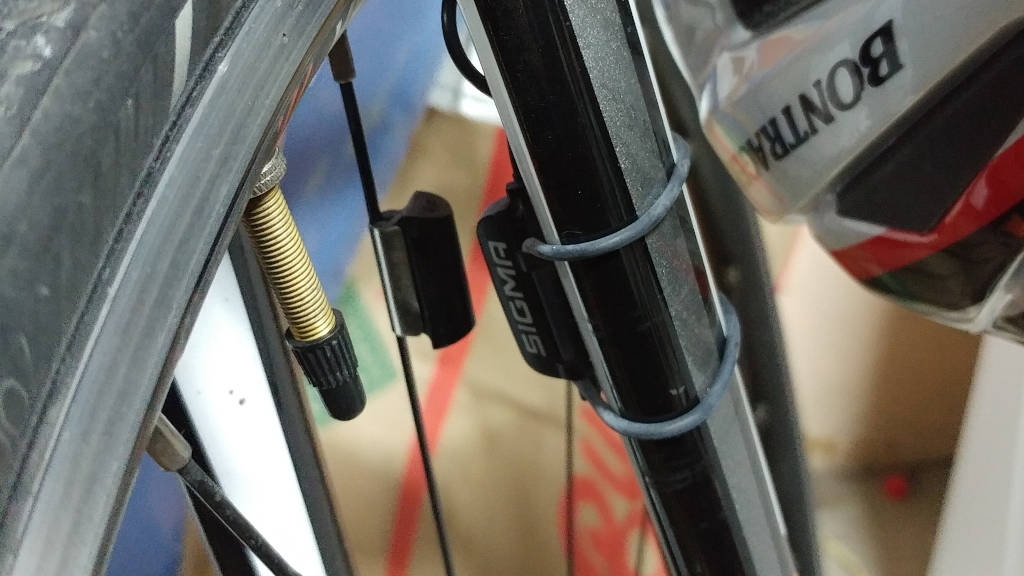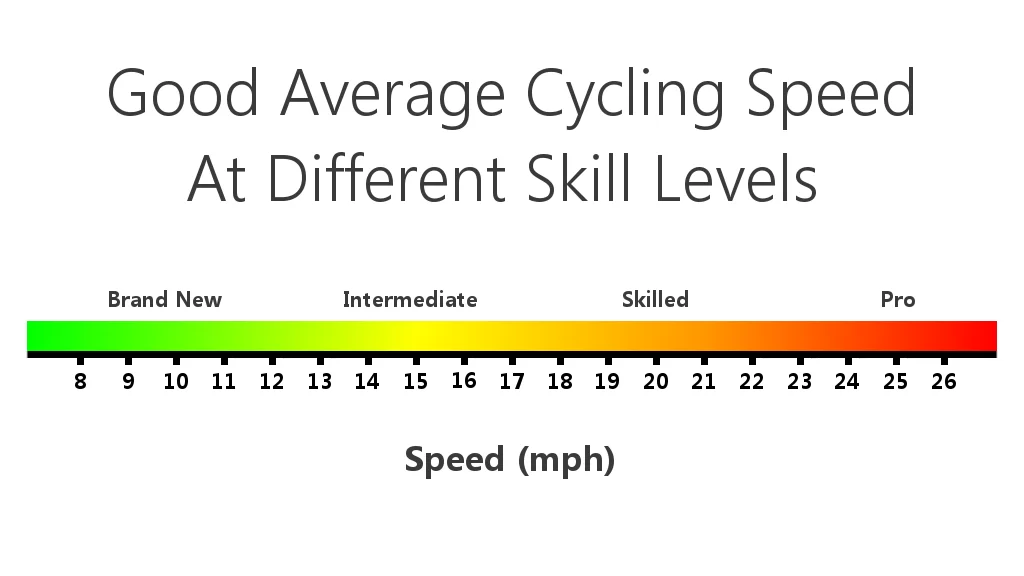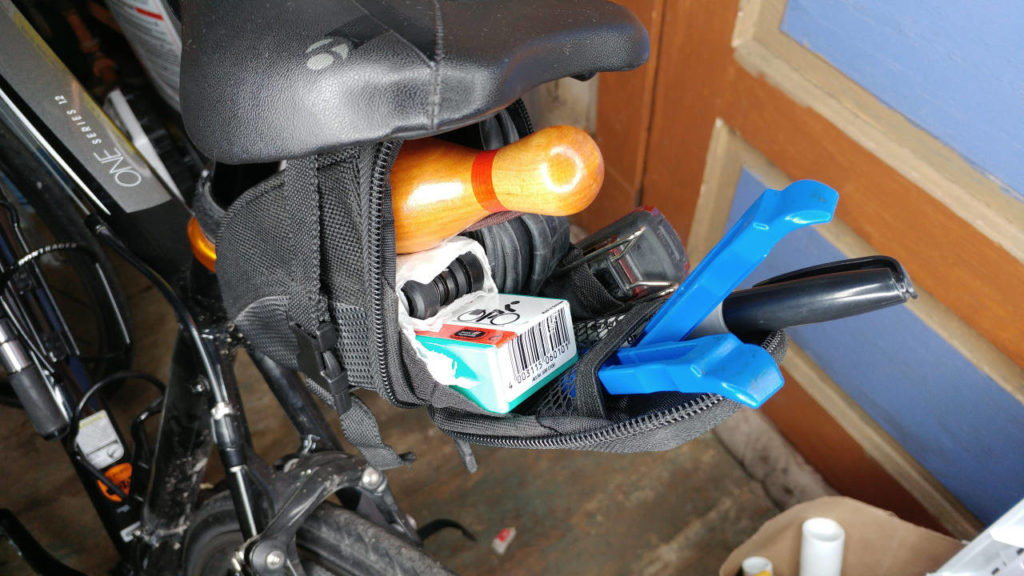Most bike computers use a magnet and a sensor to time how long it takes for your wheel to rotate. It can then use the size of your tire to calculate statistics like your current speed, distance traveled, and average speed. However, they can talk to many kinds of sensors to track things like your cadence, wattage, GPS location, and even your heart rate.
While they can do many things, the most important function of a bike computer is to tell you how fast you are going and how far you’ve gone. There are two main ways they will accomplish that.
Most use a magnet and a sensor
The magnet is placed on a spoke on either the front or rear tire. If you are more interested in how to place your sensor properly, here’s an article I wrote all about that.
The sensor is just a special kind of switch. It completes a circuit and sends a signal to the computer whenever it is close to a magnet.
Reed switches are the most common magnetic switches. When a magnetic field gets close, the normally open leads are polarized and attract one another. That closes the circuit and sends the signal to the computer. Reed switches are the cheapest kinds of magnetic switches.
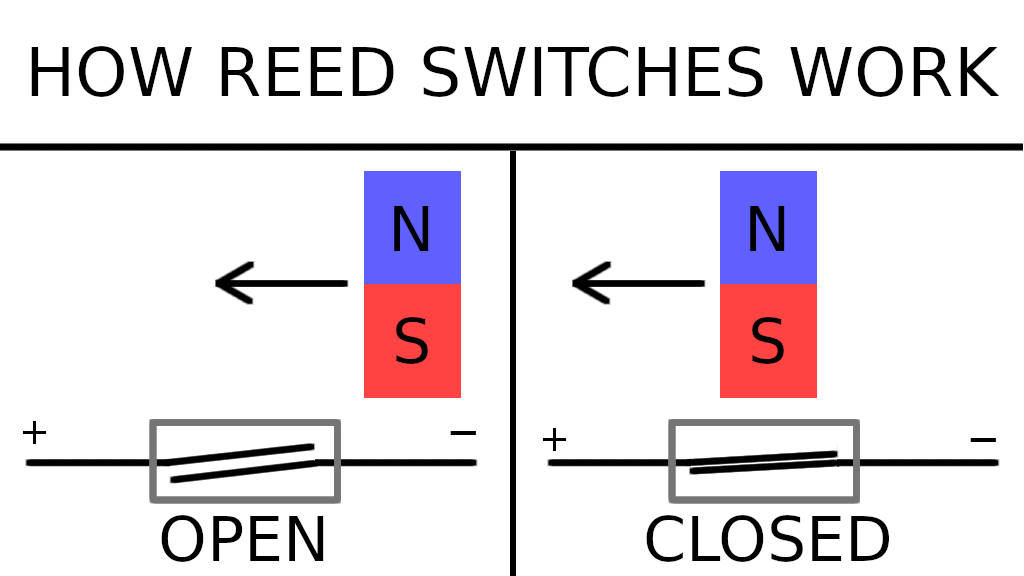
Some use orientation sensors
Instead of using a magnet and a magnet switch, some companies like Garmin have speed sensors that utilize wireless orientation sensors. You can place the sensor on the hub of one of your wheels and it will tell your computer when the wheel rotates.
They time your tire rotations and do a lot of math
When you input your wheel size into the bike computer, it can calculate how far you move every time it rotates. It is also constantly timing how long it takes to make one full rotation. Since it knows how far you went and how long it took, it can calculate your speed.
For example, if it counts 0.5 seconds between rotations, it knows that your bike has traveled the circumference of your tire in half a second. For a 26 inch (700 mm) tire, the equation for its circumference is 26 in. * \pi = 81.7 in.
To calculate how fast you are currently going, it converts your speed to mph (or kph).
Your speed is just the distance divided by the time it took you to travel it. Since you traveled 81.7 in. in 0.5 seconds, that makes your speed \frac {81.7 in.}{0.5 s}=163.4 \frac{in}{s}. Inches per second isn’t terribly useful to most people. So, it still needs to convert the inches to miles, and the seconds to hours. Here’s the equation:
\frac{ 81.7 in}{0.5 s} * \frac{1 ft}{12 in} * \frac{1 mile}{5280 ft} *\frac{60 s}{1 min} * \frac{60 min}{1 hr} = 9.3 mph
If you are converting to kph, it will look more like this:
\frac{2.2 m}{0.5 s} * \frac{1 km}{1000 m} * \frac{60 s}{1 min} * \frac{60 min}{1 hr} = 15.8 kph
How bike computers use power meters
You exert power by using a force over a distance. In the case of pedal power meters, they measure how hard you are pedaling and multiply it by how much you have pedaled.
Most of the sensors are embedded into your cranks or pedals. They communicate their calculations back to the bike computer via ANT+ or Bluetooth Low Energy (BLE). Those are communication protocols that send data via radio waves.
How bike computers use heart rate monitors
Heart rate monitors use one of two different techniques. They either sense the electrical signals coming from your heart as it beats, or they use LEDs and receptors to detect your blood flow. If your heart rate unit wraps around your chest it is most likely measuring electrical signals. However, if you are using a smart watch to track your heart rate, they tend to use the LED method.
Regardless of which method it uses, a heart rate monitor that communicate data back to the bike computer will do so via ANT+ or BLE like a power meter does.
I personally use a Garmin Vivoactive 3 (click here to check it out on Amazon). It has it’s own GPS tracking and heart rate monitor. I record my activity on the watch, and then it uploads it to my phone. I also have my Garmin synced to Strava, a popular ride tracking app, so I can compare it against my other rides. I don’t really use it during my ride, but it’s nice to see afterward.
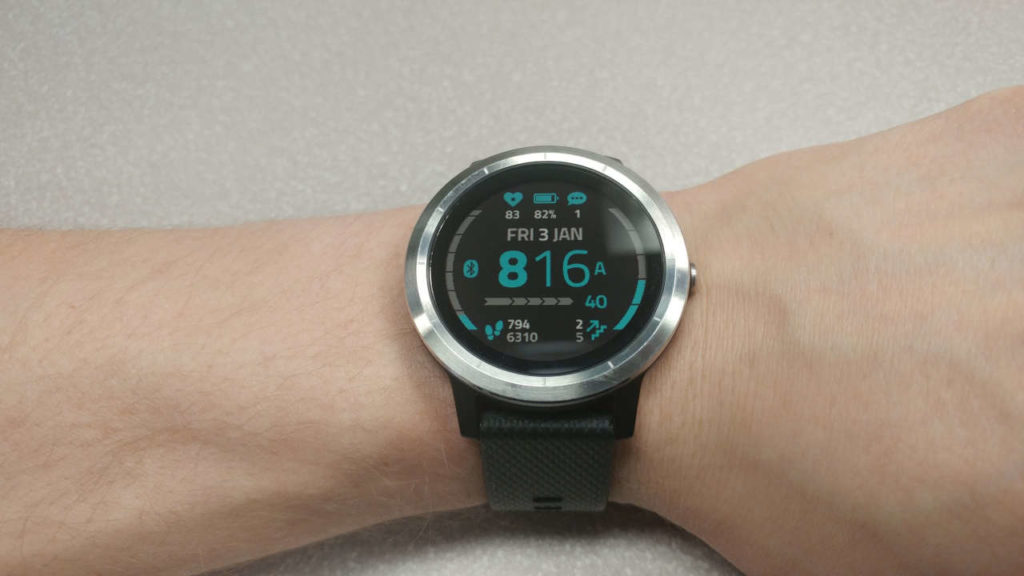
How bike computers use cadence sensors
Cadence sensors are almost exactly the same as the speedometers. They can use magnets, orientation sensors, and sometimes use pressure sensors, but they time how long it takes your pedals to rotate instead of timing the wheels. Just like the other sensors, they can communicate how quickly you pedal back to the bike computer via ANT+ or BLE.
Wahoo is a name brand manufacturer of sensors, and they have a set of cadence and speed sensors on Amazon that sync straight to your phone. That makes them a really interesting proposition because you don’t need to buy a bike computer too. If you are interested in learning a bit more about what to take into consideration when deciding if you need to get a bike computer, take a look at this article I wrote about exactly that.
As you can see, bike computers use basic sensors and do a lot of math to calculate a bunch of different statistics. Hopefully that explained them well enough for you to be more confident when you work with them!
Thanks for being here!
I make content that empowers people to enjoy riding their bikes.
Are you interested in learning more about that?
Here are some hand
